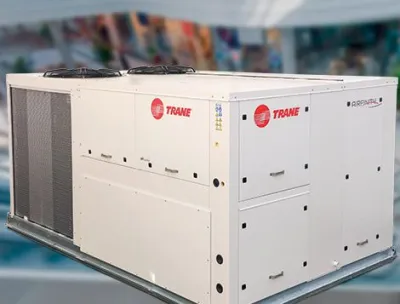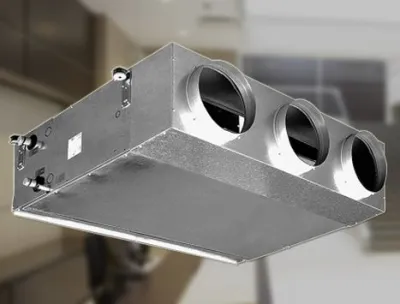Overview of the most commonly used refrigerants and its GWP
Trane Deutschland GmbH
TRANE ECTV
eCTV CentraVac™ Centrifugal Chiller CVHH/CDHH (3,000-14,000kW)
Key Features
- Next generation refrigerant R1233zd(E) with low global warming potential
- CVHH - one circuit/one compressor
- CDHH - two circuits/two compressors
- Direct driven, multi-stage compressors
- Semi-hermetic compressor construction
- economizer
- Quick start after power failure
Benefits for customers
- Reliability
- Efficiency
- Low Emission
Series E™ CenTraVac™ chillers are part of Ingersoll Rand's EcoWise™ product portfolio, designed to reduce environmental impact using state-of-the-art refrigerants that have low global warming potential and enable highly efficient operation.
Options
As with all CenTraVac™ chillers, the selection options allow a unit to be built to your specifications. From energy saving options to the enhanced electrical package and various low and medium voltage options, your Trane chiller can be customized to meet your needs.
- Low voltage (<600V) options include unit and remote-mount star, delta, or electronic starters, or a unit-mount Adaptive Frequency™ Drive.
- Low voltage (3.3-6.6kV or 10-11kV) options include unit and remote mounted direct-on-line starters or starting transformers, or a unit-mounted Adaptive Frequency™ Drive.
Energy saving options include:
- Heat pump for up to 60 °C leaving water temperature at the condenser
- Total heat recovery (double bundle heat exchanger for total heat recovery)
- Additional condenser (partial heat recovery)
- Heat retention (up to -7.8°C)
- Free cooling
Tracer AdaptiView™ Controller
- The Trane Adaptive Control™ strategies behind CenTraVac chillers address a variety of conditions to ensure efficient chiller operation for all applications. This includes patented control algorithms that maximize performance in variable primary power systems.
- The design, based on an open protocol, supports integration into any building automation system without the need for gateways (BACnetTM, LonTalk®, and Modbus RTU)


















